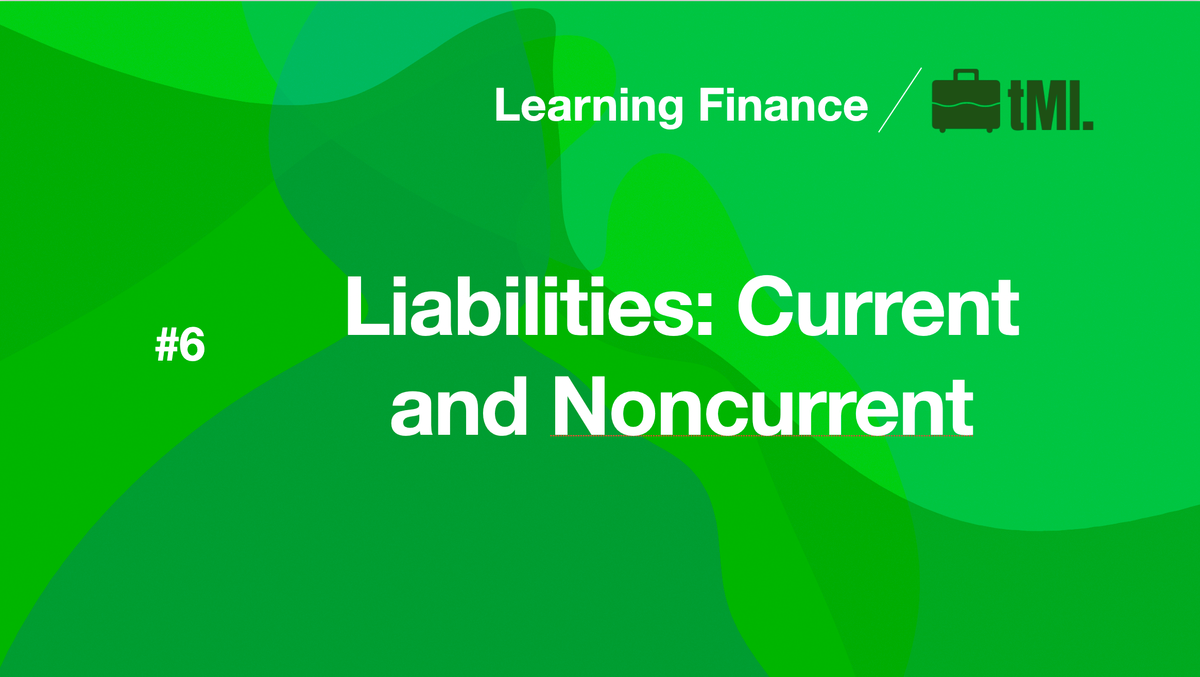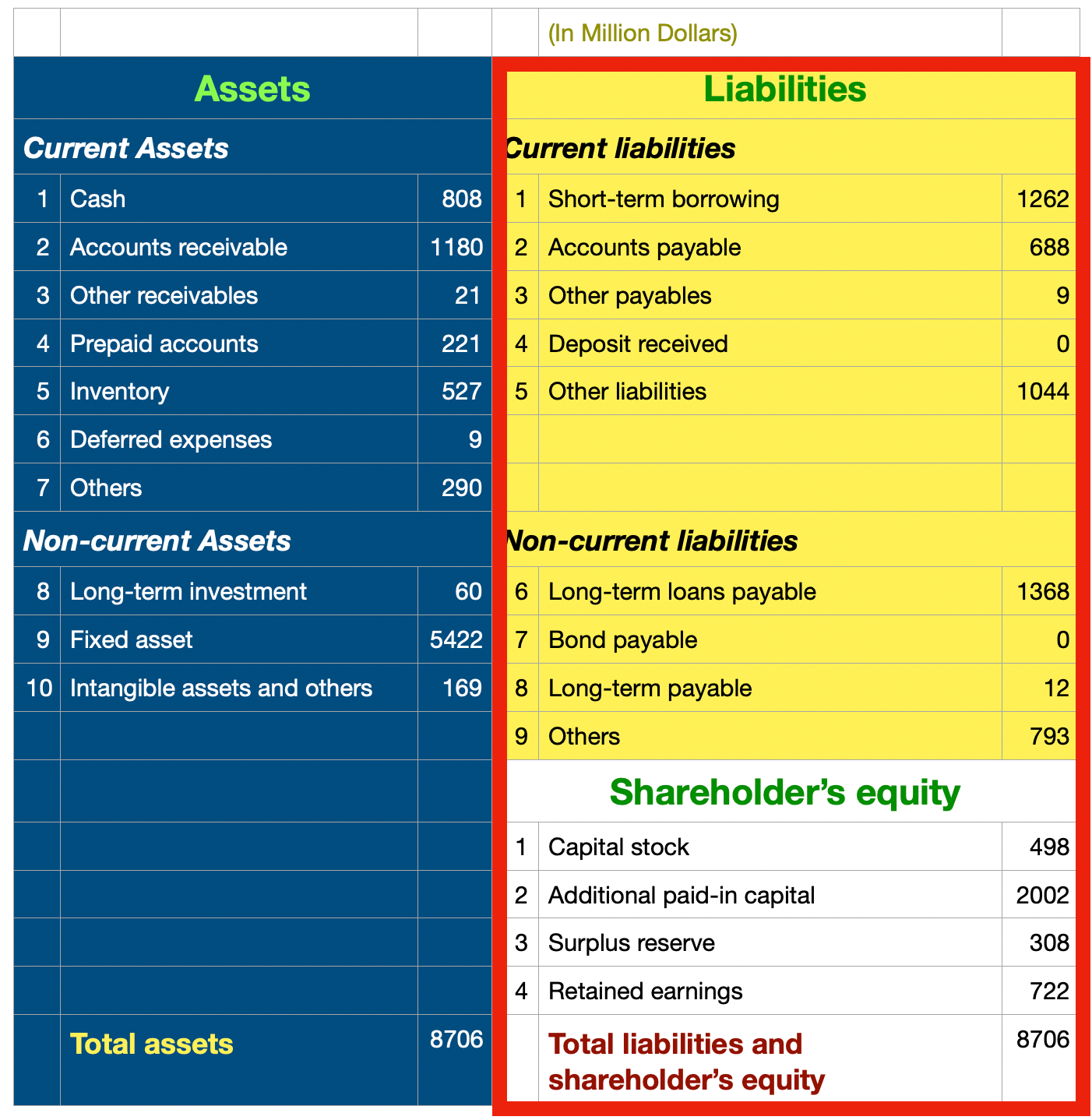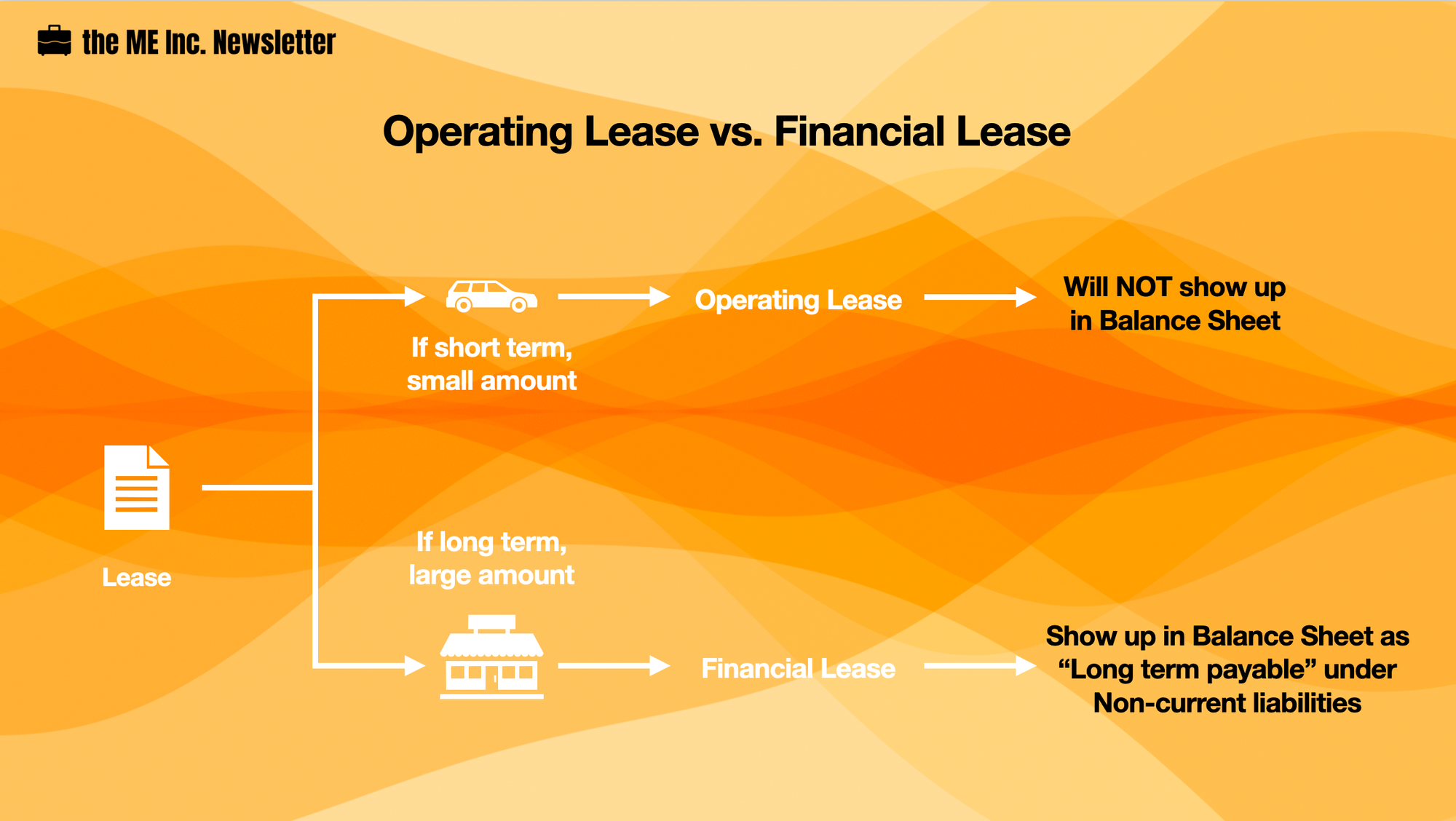Liabilities: Current and Noncurrent
A company will classify liabilities within 12 months as current and beyond 12 months as Noncurrent. Read to learn more.

In previous episodes of the Learning Finance series, I've learned Basics of Balance Sheet, different types of assets, how to use Balance Sheet to understand how companies work, and the basic rules of asset pricing system. Now we are moving on to the right side of the Balance Sheet.
On the right side of the balance sheet there are two sections - liabilities and shareholder's equity. Let's get into liability first.

Current vs. Non-current Liabilities
Similar to how assets are structured into current and non-current ones, liabilities are also structured the same way. Current liabilities are to be repaid within the next 12 months, and non-current liabilities beyond 12 months. Pretty easy to remember.
Current Liabilities
Short-term Borrowing
Short-term borrowings are bank loans with a 12-month or less maturity. Bank loans beyond that will be considered as long-term debt or long-term loans payable. For our company in the Balance Sheet, it has over 1.2 billion dollars of short-term borrowings.
Accounts Payables
Whom will a business owe money to besides banks?
Well when a business sells goods to a customer, the customer may not pay the business right away, i.e. owing money to the business. Thus, the business has accrued accounts receivable, i.e. the right to collect the agreed-upon amount of money at a later time, and meantime, the customer has accounts payable with the same amount, i.e. the obligation to pay the business the agreed-upon amount of money at a later time. For our company, it has 688 millions of accounts payables.
Other Payables
One example would be one of my friends has a temporary cash flow issue, so he borrowed a million dollars from me. What do we call this? To me the lender, it is other receivable; to him, it is other payable. For our company, it has 9 million dollars of other payables.
Deposits Received
Now let’s go back to the situation when we purchase raw materials from the supplier. The supplier may ask for an upfront deposit, or prepaid accounts. This advance to supplier grants me the right to receive delivery of goods, and all goods are rightfully my assets. This prepayment will also become the supplier's obligation, or a liability. This particular liability item is called deposits received, or advances from customers. Our company doesn't have any deposits received from its customers.
Other Liabilities
There are many other items in the liability category, which are put into one line of item called other liabilities. This item is actually a combination of a number of items, so we need to break it down.
If you look at it carefully, you will find this item is not a small amount; it is over a billion dollars. What do you think might be included in there?
In other words, whom will the business owe money to besides the bank, the suppliers and the customers?
Well first, almost all businesses owe money to their employees, since most businesses pay wages in the next month after their employees have provided their services. Of course this liability will be paid off very soon, or else employees will soon become ex-employees. This salary owed to the employees is called accrued payroll.
All businesses also owe money to the tax bureau on a regular basis, for the reason that most businesses don’t prepay taxes. What they do instead is paying taxes in the next month. So when the accountants prepare financial statements at the end of each month, there are taxes owed to the tax bureau. This liability is called taxes payable.
As a matter of fact, almost every business has accrued payroll and taxes payable.
Non-current Liabilities
Long-term Loans Payable
We went through this item briefly when we were talking about short-term borrowing. Long-term loans payable are essentially bank loans beyond 12 months. Our company has over 1.3 billion dollars of long-term loans, more than its short-term borrowings.
Bond Payable
Bonds are debt products issued by the company, and not all companies can issue bonds. As you can see, our company has no bond payable.
Long-term Payable
Long-term payables are related to certain specific kind of transactions such as leases.
Normally when we rent something, the ownership of the product is not transferred. But in accounting, there might be instances where we need to document leases in the Balance Sheet.
Leases are divided into two categories - operating leases and financial leases. Only financial leases are long-term payables.
When a lease is relatively long, and involves a large amount of money, it is often treated as a financial lease. Otherwise it is an operating lease. If a lease is considered an operating lease, then we are renting something we don’t own, i.e. the ownership is NOT transferred. Operating leases are expenses paid out by the company, therefore they don't show up on the balance sheet.
Financial leases, on the other hand, are treated as if we are paying a loan for an asset. Therefore, it means that the ownership of the asset is transferred, and the rentals are portions of the loan. In fact, from the moment we sign the lease contract of that asset, all the future rental expenses will turn into liability, also known as long-term payable.





